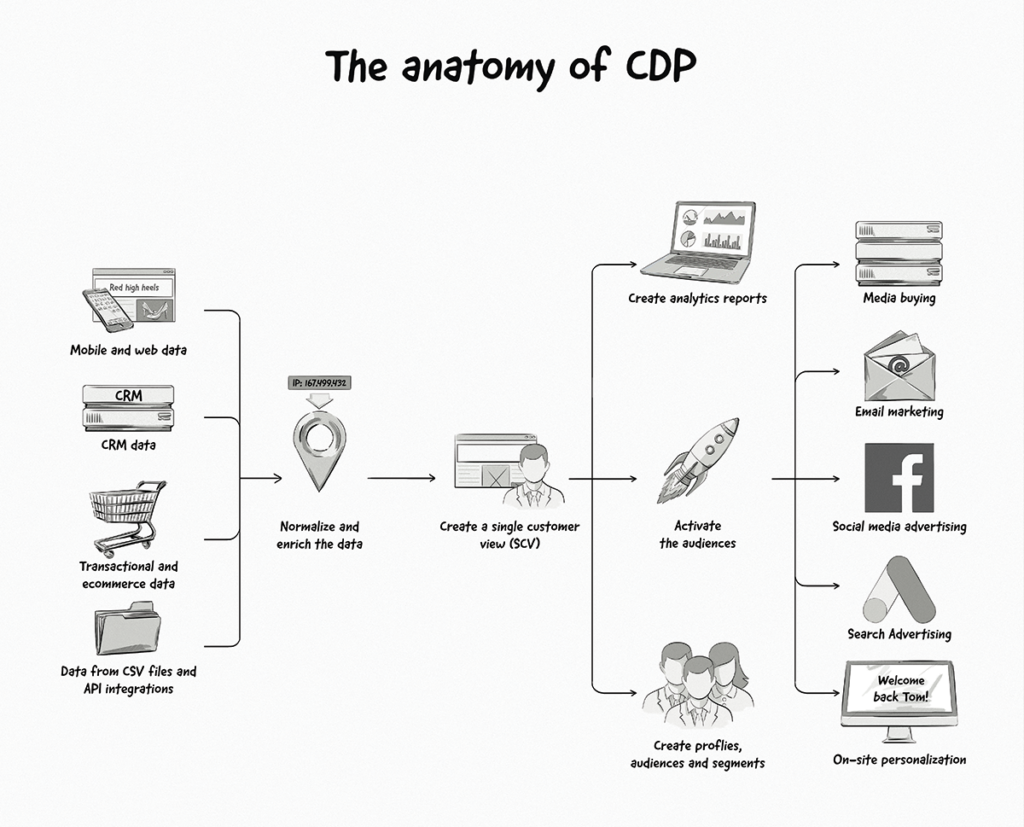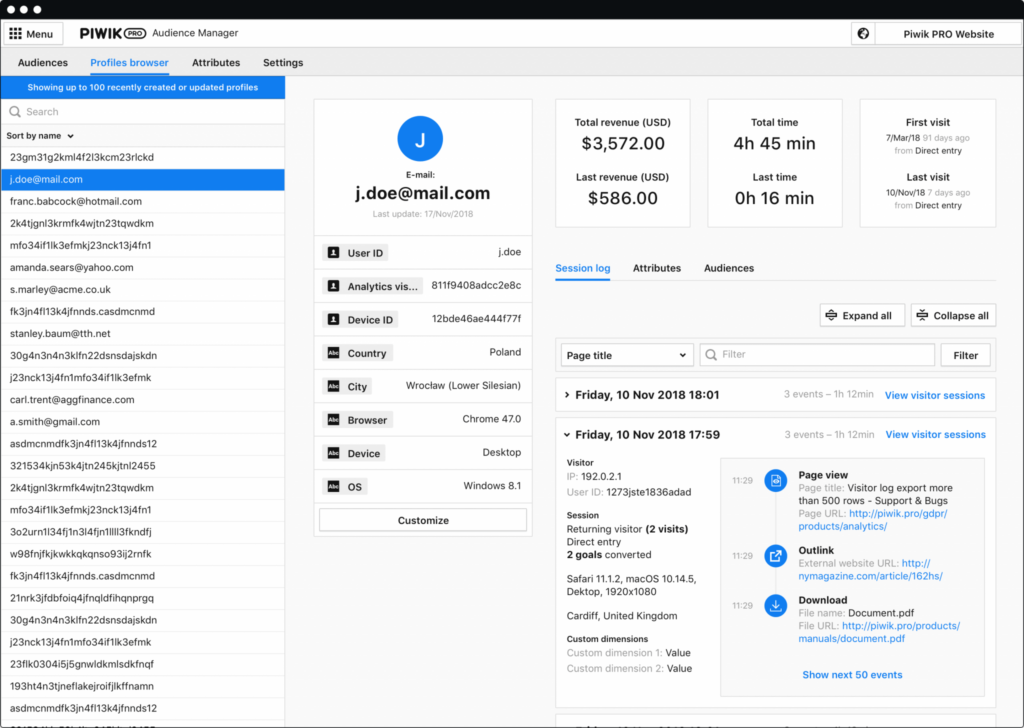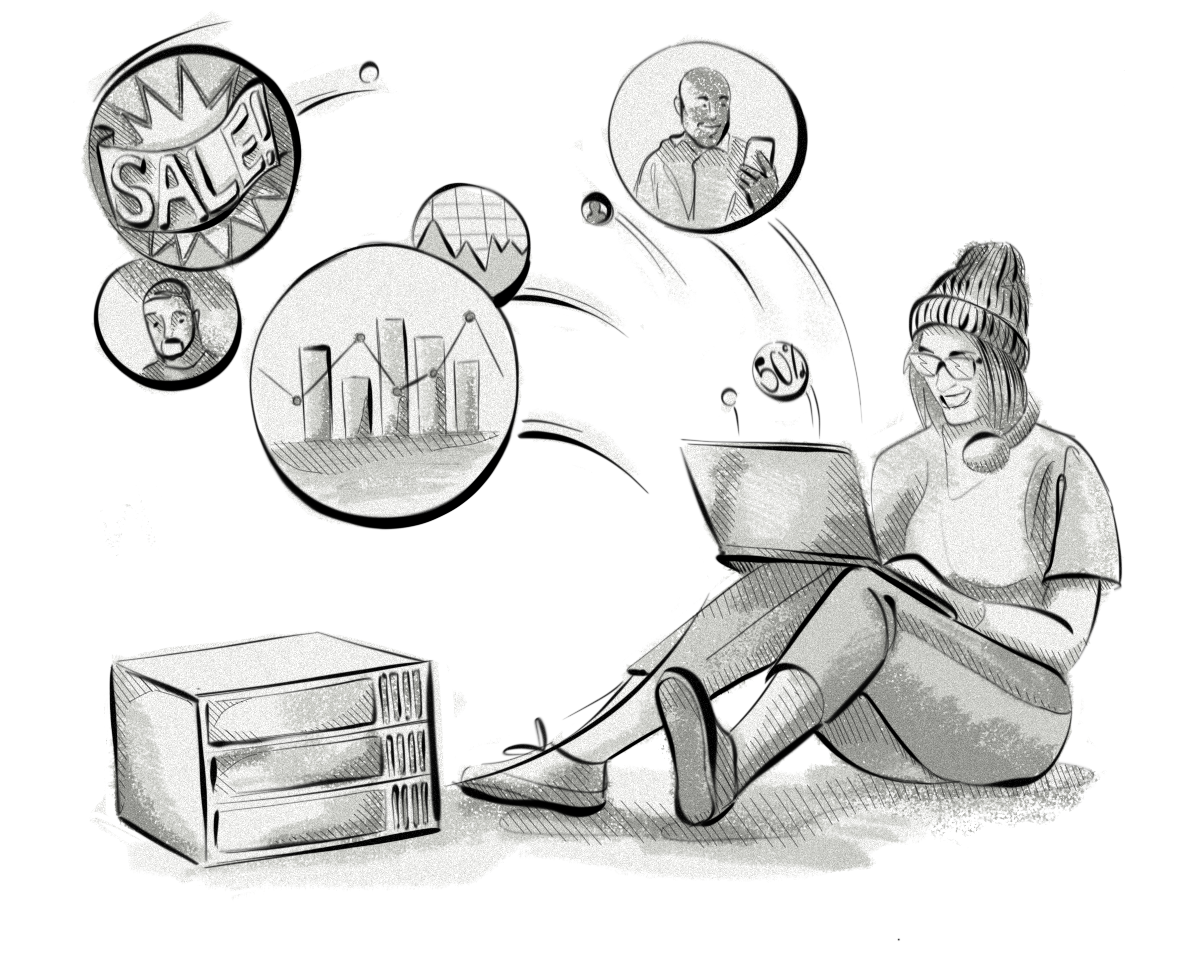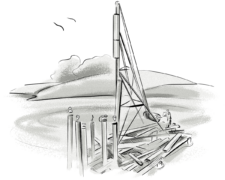Marketers use various systems to collect valuable information about their customers, including email systems, customer relationship management (CRM) software, analytics tools etc. But usually, these are siloed systems that don’t exchange information with one another.
Instead of making your marketing efforts easier, all these decentralized data silos make it harder. Scrapping information piece by piece from all those sources leads to drawing inaccurate conclusions and wastes a lot of energy.
Fortunately, there is a piece of marketing software that allows companies to collect their first-party customer data and build a central repository of client-oriented information and use it for audience activation. It’s called a customer data platform (CDP).
The term customer data platform emerged in 2013. Since then, CDPs have risen in popularity and become a crucial part of the advertising and marketing activities for many companies.
We Can Help You Build a Customer Data Platform (CDP)
Our AdTech development teams can work with you to design, build, and maintain a custom-built customer data platform (CDP) for any programmatic advertising channel.
What Is a Customer Data Platform (CDP) And How Does It Work?
A customer data platform (CDP) is a piece of software that collects, aggregates and manages data about your clients. This data is acquired from marketing and sales systems and tools you use on a daily basis, e.g., from email systems and customer relationship management (CRM) systems. A CDP is essentially one place for all your first-party customer data.

The Anatomy of a Customer Data Platform (CDP) [infographic] by Clearcode
This type of system offers a number of advantages. First of all, CDP allows you to build a single customer view (SCV), which is a single card with detailed information about your customer and previous interactions they’ve had with your brand.

An example of a single customer view displaying essential information.
Source: Piwik PRO
By using a CDP, you can:
- Perform in-depth analysis of your customers.
- Create customer profiles and merge repetitive ones together.
- Segment existing and new audiences in a proper manner.
- Create a repository of GDPR consent decisions.
- Provide better customer support.
The main goal of using CDPs for most marketers is to boost media campaigns, send fitting automated emails, run high-quality retargeting campaigns, improve targeting on search advertising campaigns and utilize predictive content personalization.
In other words, a customer data platform is one tool that makes marketing and sales efforts easier.
How Does a CDP Work?
In order to do all those things we mentioned above, a CDP gathers first-party data from your sales and marketing tools, unifies it and stores it in one place. To be more specific, a CDP collects both device-level data (cookie IDs, device IDs and IP address) and personal data (e.g. names, addresses, email address and phone numbers).
A customer data platform can aggregate:
- Identity data — name, demographic information, location, contact details etc.
- Descriptive data — career information, lifestyle information, hobbies etc.
- Quantitative data — the number of purchased products, order dates etc.
- Behavioral data — website visits, social media engagement, used devices etc.
- Qualitative data — favourite color, customer service rating etc.
Another key feature of a CDP is analysis.
The process of turning different data into reports, SCVs and segments is simple.
The first step is data acquisition whereby the CDP integrates many data sources together in one place.
The second step is unifying data formats. Then, as a third step, the CDP builds reports and dashboards to allow you to view and track your marketing campaigns and goals.
The final step is data activation, which means taking all that information and using it to activate data that can then be used to improve and optimize marketing campaigns, among other things.
You can compare data activation to starting an engine in a car. If you don’t turn your ignition key, you won’t go anywhere.
Who Uses a CDP?
A typical user of a customer data platform is a marketer or advertiser. This person is responsible for recognizing their customers’ needs, creating marketing strategies and tailoring solutions and services to their customers to achieve business success.
Beside the marketer, a person who needs advanced analytics can also utilize a CDP to their advantage. Data available in dashboards brings valuable insights and allows them to run detailed analysis.
In a more general view, a customer data platform is a great solution for companies utilising programmatic advertising and digital marketing, as well as for enterprise-level companies, agencies, and e-commerce companies. But really, any company handling diluted sources of data and data silos can benefit from a CDP.
What Are the Main Use Cases of a CDP for Programmatic Advertising and Digital Marketing?
Custom data platforms are like the brains of modern marketing. They collect and process data 24/7 in order to evolve the communication with your clients and improve the performance of your advertising and marketing efforts.
Below we have collected eight advertising and marketing use cases of a CDP.
Use Case #1: Increasing Sales
Increasing sales via cross-selling and upselling is possible due to the transactional and qualitative data a CDP can gather. For example, you can offer individual discount codes or recommend products matching your customer’s lifestyle and interests.
Use Case #2: Gaining a Better Understanding of your Brand and Its Offer
A customer who interacted with your brand in the past can get customized content. For personalization, CDPs use identity (e.g., name) and behavioral (e.g. topics of interests) data.
Use Case #3: Using the Community’s Potential in Social Media
A CDP allows you to group your target audience into dozens of segments. You can leverage this information to get your prospective customers’ attention on social media and engage them in your brand’s activity.
Use Case #4: Avoiding Customer Loss
A declining amount of interactions with your brand may indicate a weaker bond between your business and a customer. With a CDP, you can identify such individuals and send them personalized messages that will rebuild and strengthen the bond.
Use Case #5: Online + Offline Customer Profile Creation
Based on the information about the customer’s behavior in the virtual world, you can recognize this customer in your brick and mortar stores. That way you will have a 360 degree view on your customer.
Use Case #6: Personalized Omnichannel Communication
Segmentation based on transactional data allows you to reach your customers via the channels they actually use. You can automate communication, send timely messages, tailor your offers to the needs and capabilities of your client, and measure their loyalty.
Use case #7: Predicting Customer Behavior
With predictive data (e.g. probability of purchase, churn, visit, email open) you can constantly enrich your customers’ profiles and improve the marketing messages you display to them.
Use case #8: Retargeting and Look-alike Modelling
A CDP not only collects data, but also powers the advertising platforms you use with it. Thanks to this, you can create effective retargeting campaigns and attract new customers with similar preferences as your current customers via look-alike modelling.
Popular Customer Data Platform (CDP) Vendors
There are a lot of players in the CDP market. According to G2 and Gartner, the leaders are:
We covered a list of 30+ companies that provide a CDP in this blog post.
A Quick Recap
A customer data platform is a piece of software that gathers customer data, segments it, and helps with activating your audiences.
A CDP is fueled by data from sources such as mobile apps, web services, CRMs, ecommerce shops, CSV files and API integrations. The software unifies all the data formats into one and orchestrates information about your customers.
As an outcome of these operations, you will get a single customer view (SCV), analytical and reporting dashboards, and audience segments. With all this, you can create powerful marketing campaigns across email, search, and social media, perform look-alike modeling, and run retargeting campaigns. To cut down the time it takes to reach your customers on the channels they prefer and greatly increase your ROI.
Invest in buyer intelligence. To outperform the competition, you need to get to know your chosen target customers better than anyone.
We Can Help You Build a Customer Data Platform (CDP)
Our AdTech development teams can work with you to design, build, and maintain a custom-built customer data platform (CDP) for any programmatic advertising channel.







